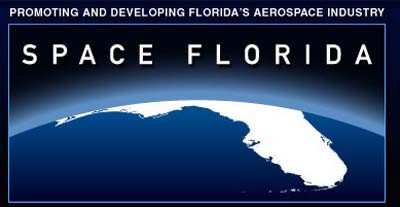Wed, May 16, 2012
Environmental Assessment Supports Expansion At Launch Complex 36B, Enables Joint FAA Launch Site Operators License For LC-36, LC-46
Space Florida will finalize an Environmental Assessment (EA) this summer that will enable the expansion of its two launch sites at Cape Canaveral Spaceport, Launch Complexes 36 and 46. The EA supports the expansion of LC-36 – specifically Pad B – to enable static test firing of all varieties and sizes of rocket motors and launch of university-developed or other small sounding rockets. It will also assist the Federal Aviation Administration (FAA) in approving both LC-36 and LC-46 for a joint Launch Site Operators License. The EA is being conducted by Florida-based RS&H, and was made possible by a Defense Infrastructure Grant allotted to Space Florida for this fiscal year.

“Adding launch and test stand capacities will provide an additional draw for companies looking at expanding their launch programs into Florida, or for Florida universities seeking a Cape launch capability,” said Space Florida Vice President of Spaceport Operations Mark Bontrager. “We have a number of launch providers that have shown a strong interest in having their own test stands and expanded facilities at our sites. Following this assessment, we can see those projects to fruition.”
Currently, Masten Space Systems is slated to utilize LC-36A in June for test launches of their liquid-fueled, small-lift reusable vehicles. The NASA Orion abort test booster and Lockheed Martin have both also publicly stated interest in utilizing LC-46 as a launch location. Additionally, the U.S. Air Force recently awarded Space Florida an IDIQ contract for LC-46.
Launch providers interested in utilizing pads on LC-36 or LC-46 could test or fly as soon as a year after requesting permission to employ these Space Florida facilities.
The EA being conducted will analyze environmental impacts associated with launch vehicles at LC-36 and LC-46 including:
- Athena-1 and Athena-2, Minotaur, Taurus, and other Castor® 120-based or Minuteman-derived booster vehicles; Peacekeeper-derived booster vehicles; and small sounding rocket launch vehicles;
- Liquid propellant medium class launch vehicles with a solid propellant second stage, and a bipropellant third stage;
- Vertical Take-off and Vertical Landing (VTVL) vehicles similar to Masten Space Systems’ G Class Launch Vehicle; and
- Orion Multi Purpose Crew Vehicle Ascent Abort test flights.
The EA will also include static testing of liquid, hybrid, and solid propellant motors of various sizes. It will analyze all propellant types including: RP-1, liquid oxygen (LOX), Isopropyl Alcohol (IPA), Ethanol, Nitrous Oxide, Hydroxyl-Terminated Polybutadiene (HTPB), hydrazine (N2H2) and nitrogen tetroxide (N2O4), Polybutadien Acrylonitrile (PBAN), Ammonium Perchlorate, and Aluminum.
More News
Also: Centauri Aircraft Valkyrie, Meet the Admin, Night Airshow, Pelton Intv'w When we laid eyes on this critter, we fell in love… and then we learned the amazing story of t>[...]
Check out Blackshape in Oshkosh Display #190 Situated in the Apulian Aerospace district in Monopoli, Italy, Blackshape embodies the epitome of Italian craftsmanship, style, and qua>[...]
A Powerhouse In Aviation Safety Technology, Visit Alpha Systems AOA at Osh Display#3124-3125 Alpha systems AOA has been developing and integrating Angle of Attack systems for the l>[...]
High-Flying Models By PilotMall.com: Honoring Aviation's Legacy We are dedicated to preserving and celebrating our rich aviation heritage through stunning mahogany wood scale repli>[...]
CiES Has Pioneered Life Saving Technology Of Use To Pilots All Over The World... Booth 3119 CiES: CiES Inc. is the global leader in digital fuel quantity sensors for general aviati>[...]
 OSH25 Day Four Redux: Spirit SE-1!, H55 eFlyer, King Schools
OSH25 Day Four Redux: Spirit SE-1!, H55 eFlyer, King Schools ANN Thanks Our Speedy Sponsor... Blackshape!!!
ANN Thanks Our Speedy Sponsor... Blackshape!!! Alpha Systems AOA Guides ANN Oshkosh Coverage
Alpha Systems AOA Guides ANN Oshkosh Coverage Pilot Mall Intro's High Flying Models To ANN Sponsor Lineup
Pilot Mall Intro's High Flying Models To ANN Sponsor Lineup CiES Fuels ANN's Oshkosh 2025 Special Event Coverage
CiES Fuels ANN's Oshkosh 2025 Special Event Coverage



